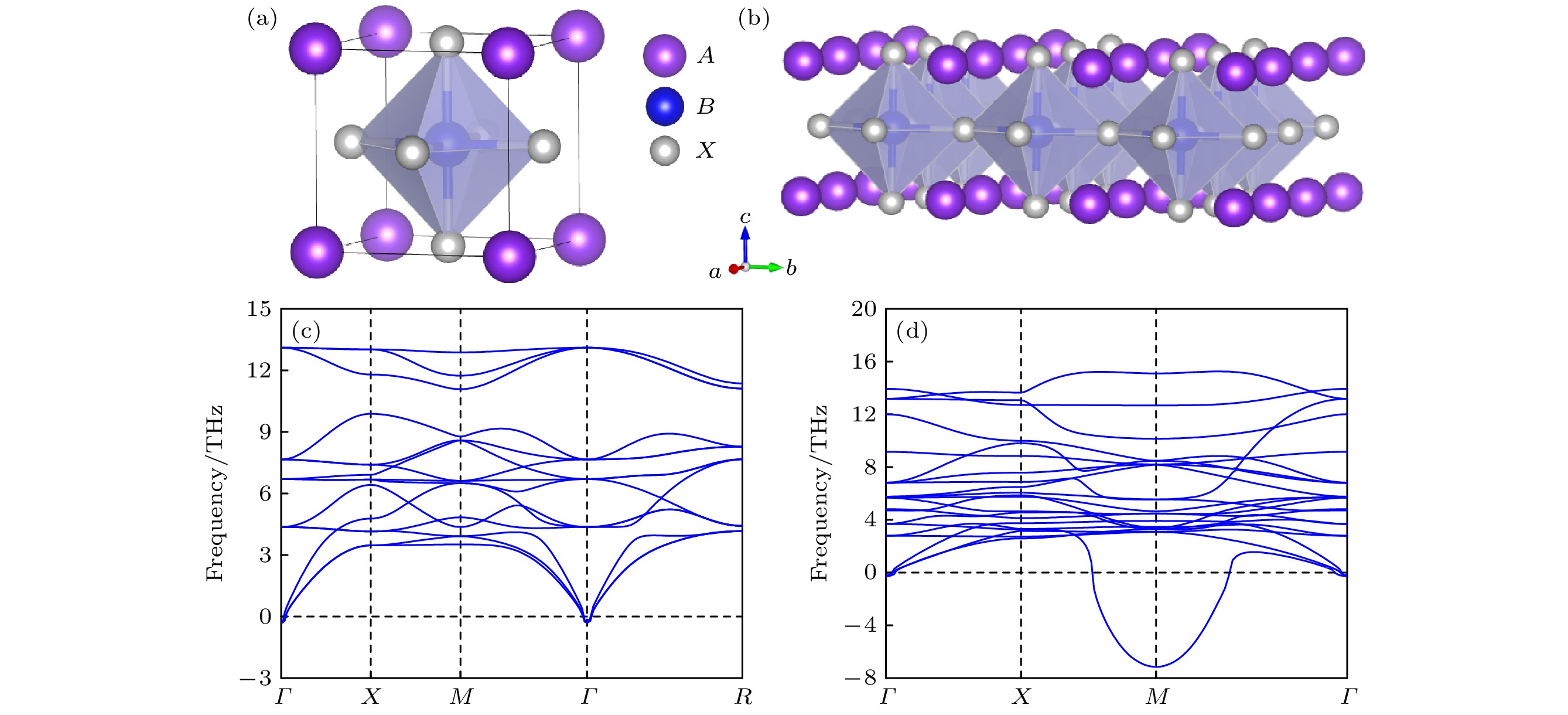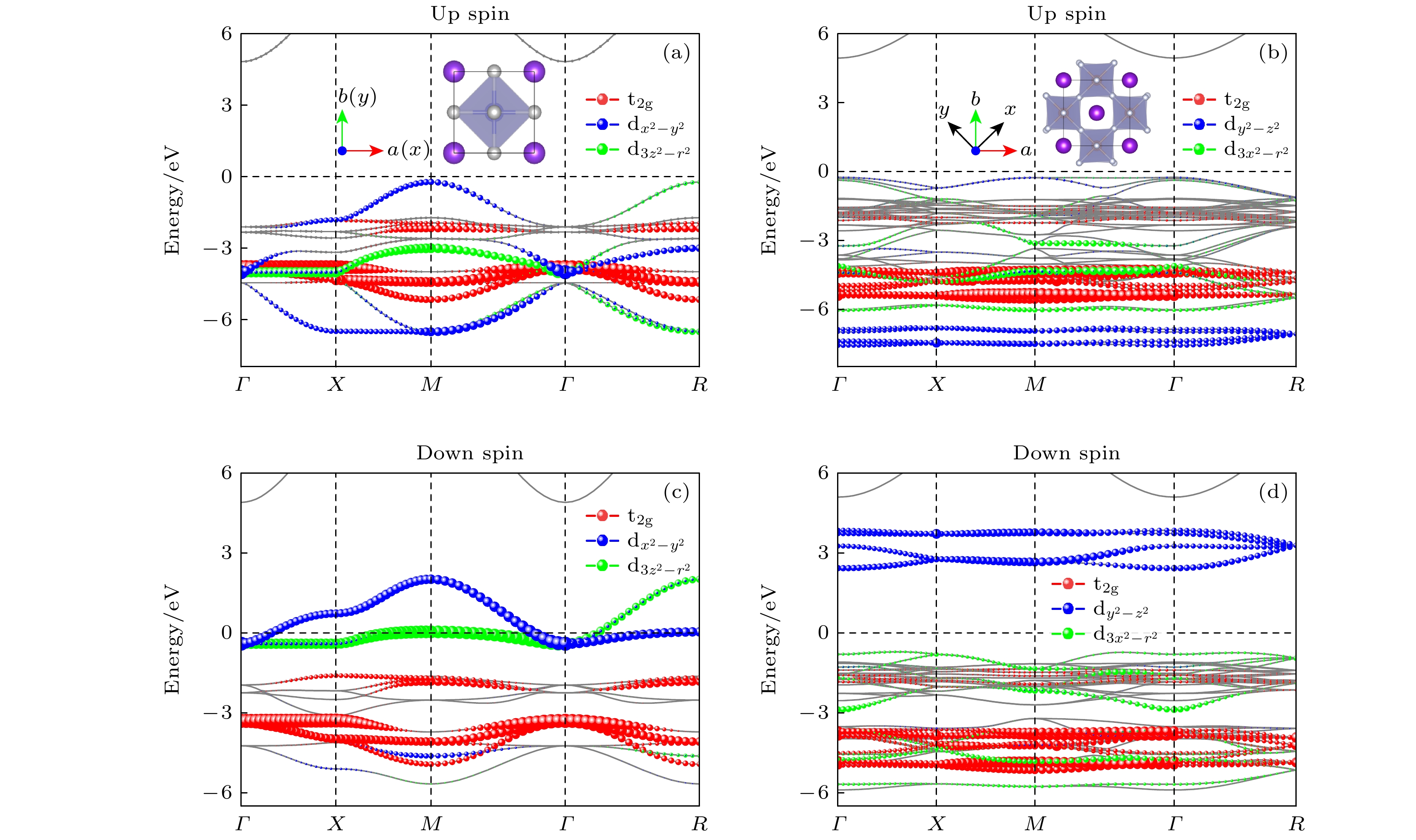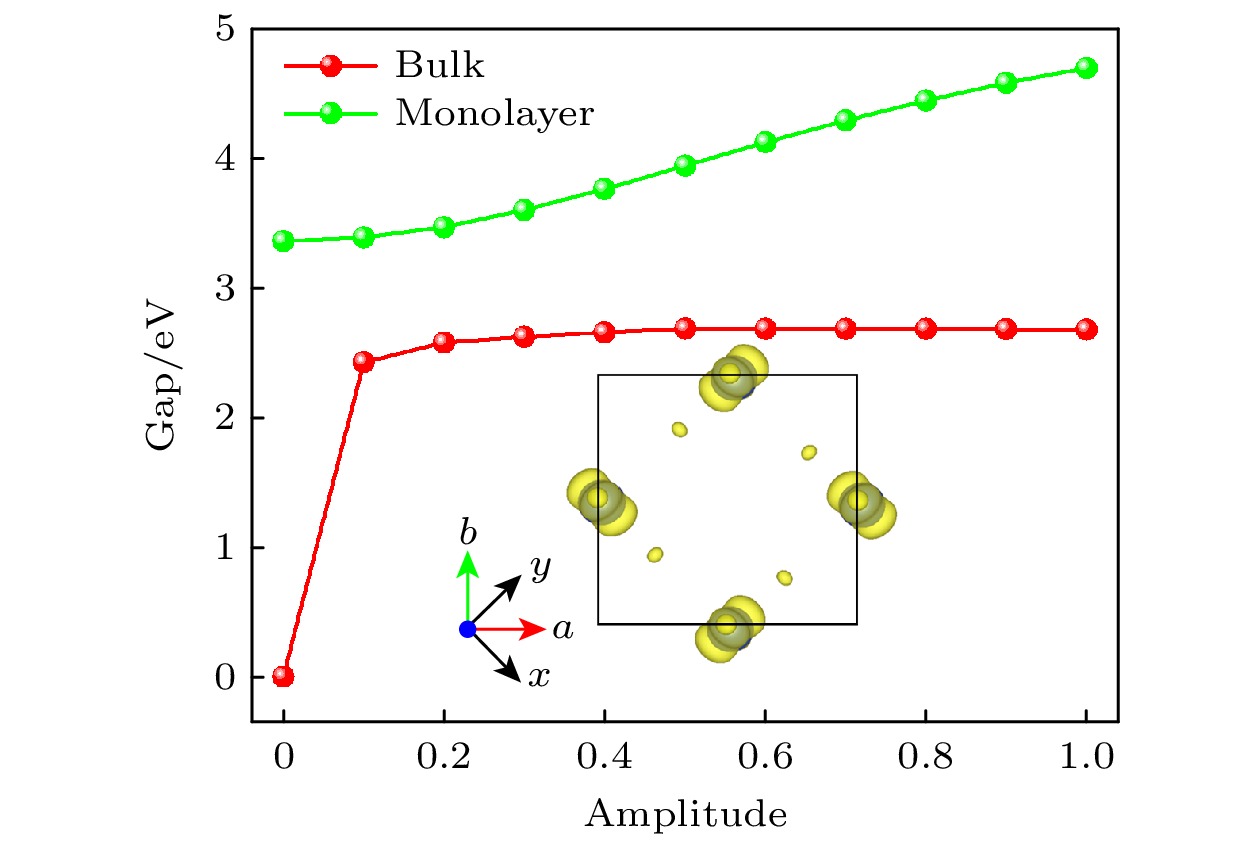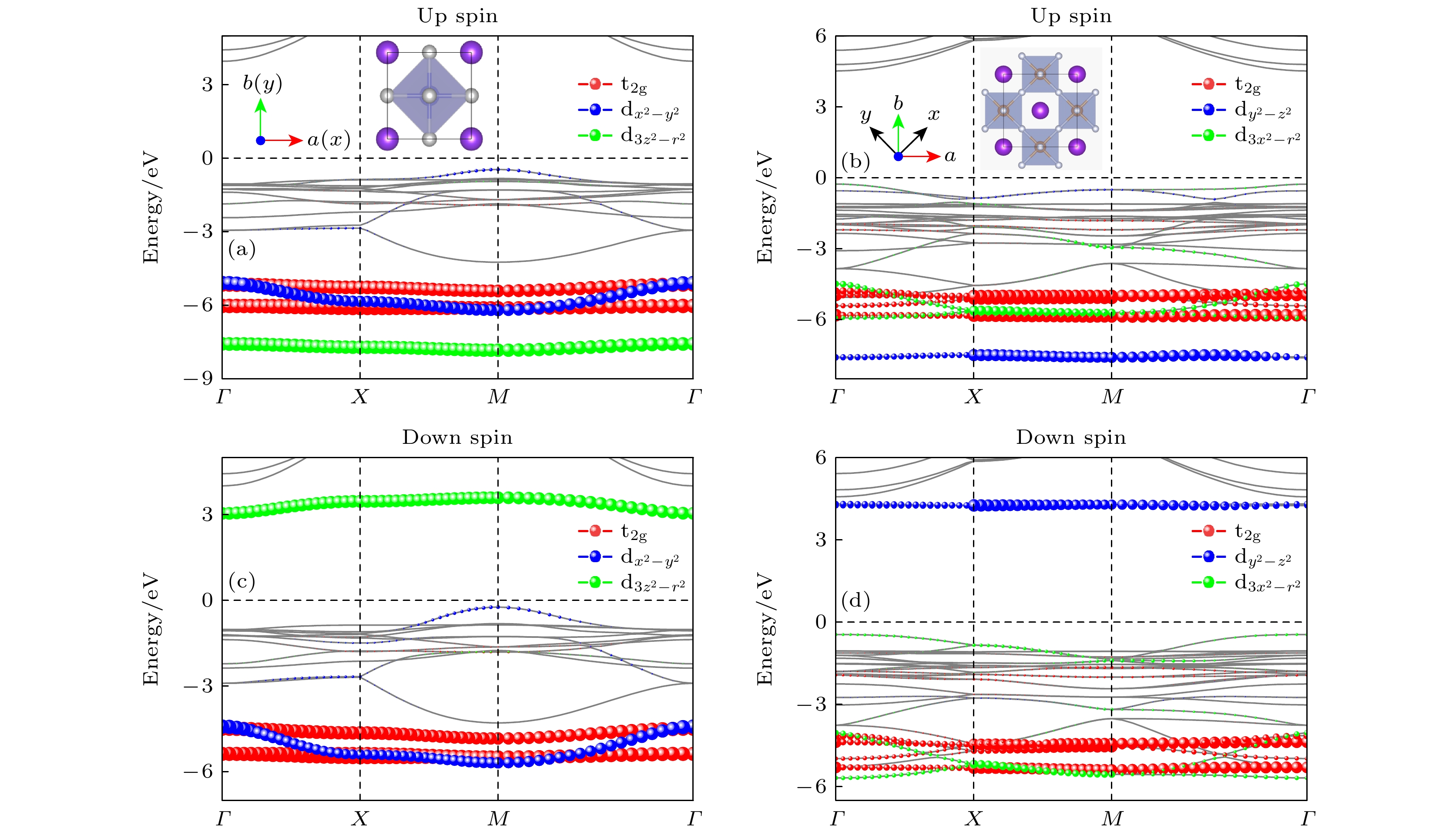-
With the decrease of system dimension, the quantum confinement effect and electronic correlation interaction inside the material will be enhanced correspondingly, often resulting in some novel physical properties. Recently, the freestanding perovskite oxide films as low as the monolayer limit have been successfully prepared and can be transferred to any desired substrate, which provides a great opportunity for exploring the functional properties of two-dimensional perovskite. In perovskite materials, Jahn-Teller distortion and orbital order often cause a variety of correlated electronic behaviors. However, unlike van der Waals materials that retain their structural and chemical bonding characteristics when they are reduced to the monolayer limit, perovskite materials may undergo structural reconstruction when they are reduced to two dimensional structures. Therefore, what are the issues to be solved urgently are whether Jahn-Teller distortion and related effects exist in the perovskite monolayer limit, and whether two-dimensional perovskite can exhibit some new properties different from its bulk phase. In this work, perovskite fluoride KCuF3 and its monolayer have been comparatively studied by the first-principles calculation, symmetry analysis, and Monte Carlo simulation methods, revealing the change in lattice dynamics, structural, electronic, and magnetic properties caused by dimensionality reduction in perovskites. The results show that the cooperative Jahn-Teller distortion and the in-plane staggered orbital order occurring in the KCuF3 bulk can be retained to the monolayer limit. However, unlike the bulk phase, the Jahn-Teller distortion mode appears as a soft mode of the prototype phase in the monolayer, and the insulating property of the monolayer does not rely on the emergence of the Jahn-Teller distortion, but it is related to the enhancement of the electronic correlation effect. The staggered orbital order causes the nearest-neighbor exchange interaction to be ferromagnetic, resulting in the monolayer being a two-dimensional ferromagnetic insulator, different from the antiferromagnetic phase in the bulk. Monte Carlo simulations predict that the Curie temperature of the monolayer is about 5 K, which is much lower than the Néel temperature of the bulk phase, indicating that the disappearance of interlayer coupling leads to a significant reduction in the magnetic phase transition temperature. This work provides guidance and reference for studying the two-dimensional perovskite materials and designing the perovskite-based two-dimensional ferromagnets.
-
Keywords:
- first principles /
- Jahn-Teller distortion /
- orbital order /
- two-dimensional ferromagnetism
[1] Geim A K, Novoselov K S 2007 Nat. Mater. 6 183
 Google Scholar
Google Scholar
[2] Radisavljevic B, Radenovic A, Brivio J, Giacometti V, Kis A 2011 Nat. Nanotechnol. 6 147
 Google Scholar
Google Scholar
[3] Novoselov K S, Mishchenko A, Carvalho A, Neto A H C 2016 Science 353 aac9439
 Google Scholar
Google Scholar
[4] 胡婷, 阚二军 2018 物理学报 67 157701
 Google Scholar
Google Scholar
Hu T, Kan E J 2018 Acta Phys. Sin. 67 157701
 Google Scholar
Google Scholar
[5] 钟婷婷, 吴梦昊 2020 物理学报 69 217707
 Google Scholar
Google Scholar
Zhong T T, Wu M H 2020 Acta Phys. Sin. 69 217707
 Google Scholar
Google Scholar
[6] 张若寒, 任慧莹, 何林 2022 物理学报 71 127302
 Google Scholar
Google Scholar
Zhang R H, Ren H Y, He L 2022 Acta Phys. Sin. 71 127302
 Google Scholar
Google Scholar
[7] Huang C, Feng J, Wu F, Ahmed D, Huang B, Xiang H, Deng K, Kan E 2018 J. Am. Chem. Soc 140 11519
 Google Scholar
Google Scholar
[8] Gibertini M, Koperski M, Morpurgo A F, Novoselov K S 2019 Nat. Nanotechnol. 14 408
 Google Scholar
Google Scholar
[9] 肖寒, 弭孟娟, 王以林 2021 物理学报 70 127503
 Google Scholar
Google Scholar
Xiao H, Mi M J, Wang Y L 2021 Acta Phys. Sin. 70 127503
 Google Scholar
Google Scholar
[10] Jiang X, Liu Q X, Xing J P, Liu N S, Guo Y, Liu Z F, Zhao J J 2021 Appl. Phys. Rev. 8 031305
 Google Scholar
Google Scholar
[11] Mermin N D, Wagner H 1966 Phys. Rev. Lett. 17 1133
 Google Scholar
Google Scholar
[12] Gong C, Li L, Li Z L, Ji H W, Stern A, Xia Y, Cao T, Bao W, Wang C Z, Wang Y, Qiu Z Q, Cava R J, Louie S G, Xia J, Zhang X 2017 Nature 546 265
 Google Scholar
Google Scholar
[13] Huang B, Clark G, Navarro-Moratalla E, Klein D R, Cheng R, Seyler K L, Zhong D, Schmidgall E, McGuire M A, Cobden D H, Yao W, Xiao D, Jarillo-Herrero P, Xu X 2017 Nature 546 270
 Google Scholar
Google Scholar
[14] Bonilla M, Kolekar S, Ma Y, Diaz H C, Kalappattil V, Das R, Eggers T, Gutierrez H R, Phan M H, Batzill M 2018 Nat. Nanotechnol. 13 289
 Google Scholar
Google Scholar
[15] Deng Y J, Yu Y J, Song Y C, Zhang J Z, Wang N Z, Sun Z Y, Yi Y F, Wu Y Z, Wu S W, Zhu J Y, Wang J, Chen X H, Zhang Y B 2018 Nature 563 94
 Google Scholar
Google Scholar
[16] Gong C, Zhang X 2019 Science 363 eaav4450
 Google Scholar
Google Scholar
[17] Song T C, Cai X H, Tu M W Y, Zhang X, Huang B, Wilson N P, Seyler K L, Zhu L, Taniguchi T, Watanabe K, McGuire M A, Cobden D H, Xiao D, Yao W, Xu X D 2018 Science 360 1214
 Google Scholar
Google Scholar
[18] Klein D R, MacNeill D, Lado J L, Soriano D, Navarro-Moratalla E, Watanabe K, Taniguchi T, Manni S, Canfield P, Fernández-Rossier J, Jarillo-Herrero P 2018 Science 360 1218
 Google Scholar
Google Scholar
[19] Kim H H, Yang B, Patel T, Sfigakis F, Li C, Tian S, Lei H, Tsen A W 2018 Nano Lett. 18 4885
 Google Scholar
Google Scholar
[20] Wang Z, Zhang T Y, Ding M, et al. 2018 Nat. Nanotechnol. 13 554
 Google Scholar
Google Scholar
[21] Dagotto E 2005 Science 309 257
 Google Scholar
Google Scholar
[22] Eerenstein W, Mathur N D, Scott J F 2006 Nature 442 759
 Google Scholar
Google Scholar
[23] Lu D, Baek D J, Hong S S, Kourkoutis L F, Hikita Y, Hwang H Y 2016 Nat. Mater. 15 1255
 Google Scholar
Google Scholar
[24] Hong S S, Yu J H, Lu D, Marshall A F, Hikita Y, Cui Y, Hwang H Y 2017 Sci. Adv. 3 eaao5173
 Google Scholar
Google Scholar
[25] Ji D X, Cai S H, Paudel T R, Sun H Y, Zhang C C, Han L, Wei Y F, Zang Y P, Gu M, Zhang Y, Gao W P, Huyan H X, Guo W, Wu D, Gu Z B, Tsymbal E Y, Wang P, Nie Y F, Pan X Q 2019 Nature 570 87
 Google Scholar
Google Scholar
[26] Lu J L, Luo W, Feng J S, Xiang H J 2018 Nano Lett. 18 595
 Google Scholar
Google Scholar
[27] Zhang J T, Shen X F, Wang Y C, Ji C, Zhou Y, Wang J L, Huang F Z, Lu X M 2020 Phys. Rev. Lett. 125 017601
 Google Scholar
Google Scholar
[28] Ricciardulli A G, Yang S, Smet J H, Saliba M 2021 Nat. Mater. 20 1325
 Google Scholar
Google Scholar
[29] Zhou Y, Dong S, Shan C, Ji K, Zhang J 2022 Phys. Rev. B 105 075408
 Google Scholar
Google Scholar
[30] Zhang J T, Zhou Y, Wang F, Shen X F, Wang J L, Lu X M 2022 Phys. Rev. Lett. 129 117603
 Google Scholar
Google Scholar
[31] Shen X F, Wang F, Lu X M, Zhang J T 2023 Nano Lett. 23 735
 Google Scholar
Google Scholar
[32] Tennant D A, Nagler S E, Welz D, Shirane G, Yamada K 1995 Phys. Rev. B 52 13381
 Google Scholar
Google Scholar
[33] Binggeli N, Altarelli M 2004 Phys. Rev. B 70 085117
 Google Scholar
Google Scholar
[34] Paolasini L, Caciuffo R, Sollier A, Ghigna P, Altarelli M 2002 Phys. Rev. Lett. 88 106403
 Google Scholar
Google Scholar
[35] Pavarini E, Koch E, Lichtenstein A I 2008 Phys. Rev. Lett. 101 266405
 Google Scholar
Google Scholar
[36] Leonov I, Binggeli N, Korotin D, Anisimov V I, Stojić N, Vollhardt D 2008 Phys. Rev. Lett. 101 096405
 Google Scholar
Google Scholar
[37] Kresse G, Furthmüller J 1996 Phys. Rev. B 54 11169
 Google Scholar
Google Scholar
[38] Kresse G, Hafner J 1993 Phys. Rev. B 47 558
 Google Scholar
Google Scholar
[39] Blöchl P E 1994 Phys. Rev. B 50 17953
 Google Scholar
Google Scholar
[40] Perdew J P, Ruzsinszky A, Csonka G I, Vydrov O A, Scuseria G E, Constantin L A, Zhou X, Burke K 2009 Phys. Rev. Lett. 102 039902
 Google Scholar
Google Scholar
[41] Dudarev S L, Botton G A, Savrasov S Y, Humphreys C J, Sutton A P 1998 Phys. Rev. B 57 1505
 Google Scholar
Google Scholar
[42] Kulik H J, Cococcioni M, Scherlis D A, Marzari N 2006 Phys. Rev. Lett. 97 103001
 Google Scholar
Google Scholar
[43] Şaşıoğlu E, Friedrich C, Blügel S 2011 Phys. Rev. B 83 121101
 Google Scholar
Google Scholar
[44] Gonze X, Lee C 1997 Phys. Rev. B 55 10355
 Google Scholar
Google Scholar
[45] Togo A, Tanaka I 2015 Scr. Mater. 108 1
 Google Scholar
Google Scholar
[46] Campbell B J, Stokes H T, Tanner D E, Hatch D M 2006 J. Appl. Crystallogr. 39 607
 Google Scholar
Google Scholar
[47] He X, Helbig N, Verstraete M J, Bousquet E 2021 Comput. Phys. Commun. 264 107938
 Google Scholar
Google Scholar
[48] Carpenter M A, Howard C J 2009 Acta Crys-tallogr., Sect. B: Struct. Sci. 65 134
 Google Scholar
Google Scholar
-
图 2 KCuF3块体 (a)及其单层 (b)中每种八面体中扭曲模式产生的结构相的能量随模式振幅的变化. 能量曲线零点对应原型相. 块体中具有相反符号的同种扭曲模式(如$ R^+ $和$ R^- $, $ Q_2^+ $和$ Q_2^- $)的能量曲线基本重叠, 因而未能全部显示出来. 插图为各种八面体旋转和JT扭曲模式的示意图. 八面体旋转和JT扭曲模式的振幅分别用阴离子沿着垂直和平行于八面体键的位移来表示
Figure 2. Change in energy of the structural phase caused by each octahedral distortion mode with the mode amplitude for the KCuF3 bulk (a) and its monolayer (b). The zero point of the energy curves represents the prototype phase. The energy curves of the same distortion modes with opposite signs, such as $ R^+ $ and $ R^- $, as well as $ Q_2^+ $ and $ Q_2^- $, basically overlap, resulting in not all being shown. The insets illustrate various octahedral rotation and JT distortion modes. The mode amplitudes of octahedral rotation and JT distortion are represented by the displacement of anions perpendicular and parallel to their octahedral bonds, respectively
图 4 KCuF3块体原型(a)和基态相(b)上、下自旋的投影能带结构. 插图为对应的晶体结构示意图. 价带中未显示彩色投影的能带(灰色曲线)主要源于F–离子的2p轨道. 计算中原型和基态相均采用铁磁序以进行对比. 对于基态相, 整体笛卡尔坐标系绕z轴旋转$ 45^\circ $以与局域晶体场坐标系重合, 其中x轴沿选择的八面体的最长键方向
Figure 4. Up-spin and down-spin projected band structures of the prototype (a) and ground-state phases (b) of the KCuF3 bulk. The insets show the corresponding crystal structures. The energy bands (gray curves) in the valence bands that do not show color projection are mainly derived from the 2p orbital of the F– ions. In the calculation, the ferromagnetic phase was used for both prototype and ground-state phases for comparison. For the ground-state phase, the global Cartesian coordinate system is rotated by $ 45^\circ $ around the z axis to coincide with the local crystal-field coordinate system, where the x axis is along the longest bond of the selected octahedron
图 6 K2CuF4单层原型(a)和基态相(b)上、下自旋的投影能带结构. 插图为对应的晶体结构示意图. 价带中未显示彩色投影的能带(灰色曲线)主要源于F–离子的2p轨道. 能带计算中原型和基态相均采用铁磁序以进行对比
Figure 6. Up-spin and down-spin projected band structures of the prototype (a) and ground-state phases (b) of the K2CuF4 monolayer. The insets show the corresponding crystal structures. The energy bands (gray curves) in the valence bands that do not show color projection are mainly derived from the 2p orbital of the F– ions. In the calculation, the ferromagnetic phase was used for both prototype and ground-state phases for comparison.
图 7 KCuF3块体(a)不同磁相的能量(相对于A型反铁磁)和(b)磁交换作用随JT模式相对振幅的变化. 基态结构的JT扭曲模式的相对振幅设置为1. 考虑的磁序包括铁磁(FM)和A, C, G型反铁磁(AFM). 插图为KCuF3块体中考虑的磁交换作用, 包括面内最近邻$ J_1 $, 面外最近邻$ J_2 $和面外次近邻$ J_3 $. K2CuF4单层(c)不同磁相的能量(相对于FM)和(d)磁交换作用随JT模式相对振幅的变化. 考虑的磁序包括FM, 交错反铁磁(S-AFM)和$ \uparrow\uparrow\downarrow\downarrow $型反铁磁(E-AFM). 插图为K2CuF4单层中考虑的磁交换作用, 包括最近邻$ J_1 $和次近邻$ J_2 $
Figure 7. Change in (a) energy of various magnetic phases (relative to A-AFM) and (b) magnetic exchange interactions with the relative amplitude of the JT distortion in the KCuF3 bulk. Relative amplitude of JT distortion of the ground-state structure is set to 1. Magnetic orders considered include FM, and A, C, G type AFM. The inset shows the magnetic exchange interactions considered in the KCuF3 bulk, including the in-plane nearest-neighbor $ J_1 $, the out-of-plane nearest-neighbor $ J_2 $ and the next-nearest-neighbor $ J_3 $. Change in (c) energy of various magnetic phases (relative to FM) and (d) magnetic exchange interactions with the relative amplitude of JT distortion in the K2CuF4 monolayer. Magnetic orders considered include FM, staggered (S), and $ \uparrow\uparrow\downarrow\downarrow $ (E) type AFM. The inset shows the magnetic exchange interactions considered in the K2CuF4 monolayer, including the nearest-neighbor $ J_1 $ and next-nearest-neighbor $ J_2 $.
图 9 KCuF3 (a)块体和(b)单层基态相的蒙特卡罗模拟. 对于块体相, 根据其A型反铁磁基态定义的反铁磁序参量($ {\boldsymbol{L}} = ({\boldsymbol{S}}_1 - {\boldsymbol{S}}_2)/2 $, 其中$ {\boldsymbol{S}}_1 $和$ {\boldsymbol{S}}_2 $为两个反铁磁子格的自旋)和比热($ C_{\mathrm{v}} $)显示为温度的函数, 而对于单层, 磁化(M) 和比热显示为温度的函数
Figure 9. Monte Carlo simulations of the ground-state phases in the (a) KCuF3 bulk and (b) monolayer. For the bulk phase, the AFM order parameter ($ {\boldsymbol{L}} = ({\boldsymbol{S}}_1 - {\boldsymbol{S}}_2)/2 $, where $ {\boldsymbol{S}}_1 $ and $ {\boldsymbol{S}}_2 $ are the spins of two antiferromagnetic sublattices) defined in terms of the A-AFM order and specific heat ($ C_{\mathrm{v}} $) are shown as functions of temperature, while for the monolayer, the magnetization (M) and specific heat are shown as functions of temperature
表 1 KCuF3块体单个八面体扭曲模式及其组合产生的结构相的空间群及相对能量(相对于基态相$ I4/mcm $). 每个扭曲模式的不可约表示的序参量固定为沿着z轴方向. 符号“—”表示对应的结构相中八面体旋转模式在结构优化后消失, 导致其结构对称性发生改变
Table 1. Space group and relative energy (relative to the ground-state phase $ I4/mcm $) of structural phases resulting from the single octahedral distortion mode and their various combinations for the KCuF3 bulk. The symbol “—” represents that the octahedral rotation mode in the corresponding structural phase disappears after structure optimization, resulting in a change in structural symmetry
扭曲模式 空间群 $ \Delta E $/(meV·f.u.–1) 0 $ Pm\bar{3}m $ (No. 221) 695.5 $ R^+ $ $ P4/mbm $ (No. 127) — $ R^- $ $ I4/mcm $ (No. 140) — $ Q_2^+ $ $ P4/mbm $ (No. 127) 0.1 $ Q_2^- $ $ I4/mcm $ (No. 140) 0 $ Q_3 $ $ I4/mmm $ (No. 139) 3.6 $ R^+ \oplus Q_2^+ $ $ Pbam $ (No. 55) — $ R^- \oplus Q_2^+ $ $ P4_2/mbc $ (No. 135) — $ R^+ \oplus Q_2^- $ $ P4_2/mbc $ (No. 135) — $ R^- \oplus Q_2^- $ $ Ibam $ (No. 72) — $ R^+ \oplus Q_3 $ $ P4/mnc $ (No. 128) — $ R^- \oplus Q_3 $ $ I4/m $ (No. 87) — 表 2 K2CuF4单层单个八面体扭曲模式及其组合产生的结构相的空间群及相对能量(相对于基态相$ P4/mbm $)
Table 2. Space group and relative energy (relative to the ground-state phase $ P4/mbm $) of structural phases resulting from the single octahedral distortion mode and their various combinations for the K2CuF4 monolayer.
扭曲模式 空间群 $ \Delta E $/(meV·f.u.–1) 0 $ P4/mmm $ (No. 123) 31.3 $ R $ $ P4/mbm $ (No. 127) — $ T(a, 0) $ $ Pmna $ (No. 53) — $ T(a, a) $ $ Cmme $ (No. 67) — $ Q_2 $ $ P4/mbm $ (No. 127) 0 $ Q_3 $ $ P4/mmm $ (No. 123) 77.8 $ R \oplus T(a;0) $ $ P2_1/c $ (No. 14) — $ R \oplus T(a, a) $ $ C2/m $ (No. 12) — $ R \oplus Q_2 $ $ Pbam $ (No. 55) — $ R \oplus Q_3 $ $ P4/m $ (No. 83) — $ Q_2 \oplus T(a, 0) $ $ P2_1/c $ (No. 14) — $ Q_3 \oplus T(a, 0) $ $ P2/m $ (No. 10) — $ Q_2 \oplus T(a, a) $ $ C2/m $ (No. 12) — $ Q_3 \oplus T(a, a) $ $ C2/m $ (No. 12) — -
[1] Geim A K, Novoselov K S 2007 Nat. Mater. 6 183
 Google Scholar
Google Scholar
[2] Radisavljevic B, Radenovic A, Brivio J, Giacometti V, Kis A 2011 Nat. Nanotechnol. 6 147
 Google Scholar
Google Scholar
[3] Novoselov K S, Mishchenko A, Carvalho A, Neto A H C 2016 Science 353 aac9439
 Google Scholar
Google Scholar
[4] 胡婷, 阚二军 2018 物理学报 67 157701
 Google Scholar
Google Scholar
Hu T, Kan E J 2018 Acta Phys. Sin. 67 157701
 Google Scholar
Google Scholar
[5] 钟婷婷, 吴梦昊 2020 物理学报 69 217707
 Google Scholar
Google Scholar
Zhong T T, Wu M H 2020 Acta Phys. Sin. 69 217707
 Google Scholar
Google Scholar
[6] 张若寒, 任慧莹, 何林 2022 物理学报 71 127302
 Google Scholar
Google Scholar
Zhang R H, Ren H Y, He L 2022 Acta Phys. Sin. 71 127302
 Google Scholar
Google Scholar
[7] Huang C, Feng J, Wu F, Ahmed D, Huang B, Xiang H, Deng K, Kan E 2018 J. Am. Chem. Soc 140 11519
 Google Scholar
Google Scholar
[8] Gibertini M, Koperski M, Morpurgo A F, Novoselov K S 2019 Nat. Nanotechnol. 14 408
 Google Scholar
Google Scholar
[9] 肖寒, 弭孟娟, 王以林 2021 物理学报 70 127503
 Google Scholar
Google Scholar
Xiao H, Mi M J, Wang Y L 2021 Acta Phys. Sin. 70 127503
 Google Scholar
Google Scholar
[10] Jiang X, Liu Q X, Xing J P, Liu N S, Guo Y, Liu Z F, Zhao J J 2021 Appl. Phys. Rev. 8 031305
 Google Scholar
Google Scholar
[11] Mermin N D, Wagner H 1966 Phys. Rev. Lett. 17 1133
 Google Scholar
Google Scholar
[12] Gong C, Li L, Li Z L, Ji H W, Stern A, Xia Y, Cao T, Bao W, Wang C Z, Wang Y, Qiu Z Q, Cava R J, Louie S G, Xia J, Zhang X 2017 Nature 546 265
 Google Scholar
Google Scholar
[13] Huang B, Clark G, Navarro-Moratalla E, Klein D R, Cheng R, Seyler K L, Zhong D, Schmidgall E, McGuire M A, Cobden D H, Yao W, Xiao D, Jarillo-Herrero P, Xu X 2017 Nature 546 270
 Google Scholar
Google Scholar
[14] Bonilla M, Kolekar S, Ma Y, Diaz H C, Kalappattil V, Das R, Eggers T, Gutierrez H R, Phan M H, Batzill M 2018 Nat. Nanotechnol. 13 289
 Google Scholar
Google Scholar
[15] Deng Y J, Yu Y J, Song Y C, Zhang J Z, Wang N Z, Sun Z Y, Yi Y F, Wu Y Z, Wu S W, Zhu J Y, Wang J, Chen X H, Zhang Y B 2018 Nature 563 94
 Google Scholar
Google Scholar
[16] Gong C, Zhang X 2019 Science 363 eaav4450
 Google Scholar
Google Scholar
[17] Song T C, Cai X H, Tu M W Y, Zhang X, Huang B, Wilson N P, Seyler K L, Zhu L, Taniguchi T, Watanabe K, McGuire M A, Cobden D H, Xiao D, Yao W, Xu X D 2018 Science 360 1214
 Google Scholar
Google Scholar
[18] Klein D R, MacNeill D, Lado J L, Soriano D, Navarro-Moratalla E, Watanabe K, Taniguchi T, Manni S, Canfield P, Fernández-Rossier J, Jarillo-Herrero P 2018 Science 360 1218
 Google Scholar
Google Scholar
[19] Kim H H, Yang B, Patel T, Sfigakis F, Li C, Tian S, Lei H, Tsen A W 2018 Nano Lett. 18 4885
 Google Scholar
Google Scholar
[20] Wang Z, Zhang T Y, Ding M, et al. 2018 Nat. Nanotechnol. 13 554
 Google Scholar
Google Scholar
[21] Dagotto E 2005 Science 309 257
 Google Scholar
Google Scholar
[22] Eerenstein W, Mathur N D, Scott J F 2006 Nature 442 759
 Google Scholar
Google Scholar
[23] Lu D, Baek D J, Hong S S, Kourkoutis L F, Hikita Y, Hwang H Y 2016 Nat. Mater. 15 1255
 Google Scholar
Google Scholar
[24] Hong S S, Yu J H, Lu D, Marshall A F, Hikita Y, Cui Y, Hwang H Y 2017 Sci. Adv. 3 eaao5173
 Google Scholar
Google Scholar
[25] Ji D X, Cai S H, Paudel T R, Sun H Y, Zhang C C, Han L, Wei Y F, Zang Y P, Gu M, Zhang Y, Gao W P, Huyan H X, Guo W, Wu D, Gu Z B, Tsymbal E Y, Wang P, Nie Y F, Pan X Q 2019 Nature 570 87
 Google Scholar
Google Scholar
[26] Lu J L, Luo W, Feng J S, Xiang H J 2018 Nano Lett. 18 595
 Google Scholar
Google Scholar
[27] Zhang J T, Shen X F, Wang Y C, Ji C, Zhou Y, Wang J L, Huang F Z, Lu X M 2020 Phys. Rev. Lett. 125 017601
 Google Scholar
Google Scholar
[28] Ricciardulli A G, Yang S, Smet J H, Saliba M 2021 Nat. Mater. 20 1325
 Google Scholar
Google Scholar
[29] Zhou Y, Dong S, Shan C, Ji K, Zhang J 2022 Phys. Rev. B 105 075408
 Google Scholar
Google Scholar
[30] Zhang J T, Zhou Y, Wang F, Shen X F, Wang J L, Lu X M 2022 Phys. Rev. Lett. 129 117603
 Google Scholar
Google Scholar
[31] Shen X F, Wang F, Lu X M, Zhang J T 2023 Nano Lett. 23 735
 Google Scholar
Google Scholar
[32] Tennant D A, Nagler S E, Welz D, Shirane G, Yamada K 1995 Phys. Rev. B 52 13381
 Google Scholar
Google Scholar
[33] Binggeli N, Altarelli M 2004 Phys. Rev. B 70 085117
 Google Scholar
Google Scholar
[34] Paolasini L, Caciuffo R, Sollier A, Ghigna P, Altarelli M 2002 Phys. Rev. Lett. 88 106403
 Google Scholar
Google Scholar
[35] Pavarini E, Koch E, Lichtenstein A I 2008 Phys. Rev. Lett. 101 266405
 Google Scholar
Google Scholar
[36] Leonov I, Binggeli N, Korotin D, Anisimov V I, Stojić N, Vollhardt D 2008 Phys. Rev. Lett. 101 096405
 Google Scholar
Google Scholar
[37] Kresse G, Furthmüller J 1996 Phys. Rev. B 54 11169
 Google Scholar
Google Scholar
[38] Kresse G, Hafner J 1993 Phys. Rev. B 47 558
 Google Scholar
Google Scholar
[39] Blöchl P E 1994 Phys. Rev. B 50 17953
 Google Scholar
Google Scholar
[40] Perdew J P, Ruzsinszky A, Csonka G I, Vydrov O A, Scuseria G E, Constantin L A, Zhou X, Burke K 2009 Phys. Rev. Lett. 102 039902
 Google Scholar
Google Scholar
[41] Dudarev S L, Botton G A, Savrasov S Y, Humphreys C J, Sutton A P 1998 Phys. Rev. B 57 1505
 Google Scholar
Google Scholar
[42] Kulik H J, Cococcioni M, Scherlis D A, Marzari N 2006 Phys. Rev. Lett. 97 103001
 Google Scholar
Google Scholar
[43] Şaşıoğlu E, Friedrich C, Blügel S 2011 Phys. Rev. B 83 121101
 Google Scholar
Google Scholar
[44] Gonze X, Lee C 1997 Phys. Rev. B 55 10355
 Google Scholar
Google Scholar
[45] Togo A, Tanaka I 2015 Scr. Mater. 108 1
 Google Scholar
Google Scholar
[46] Campbell B J, Stokes H T, Tanner D E, Hatch D M 2006 J. Appl. Crystallogr. 39 607
 Google Scholar
Google Scholar
[47] He X, Helbig N, Verstraete M J, Bousquet E 2021 Comput. Phys. Commun. 264 107938
 Google Scholar
Google Scholar
[48] Carpenter M A, Howard C J 2009 Acta Crys-tallogr., Sect. B: Struct. Sci. 65 134
 Google Scholar
Google Scholar
Catalog
Metrics
- Abstract views: 5506
- PDF Downloads: 474
- Cited By: 0















 DownLoad:
DownLoad:








